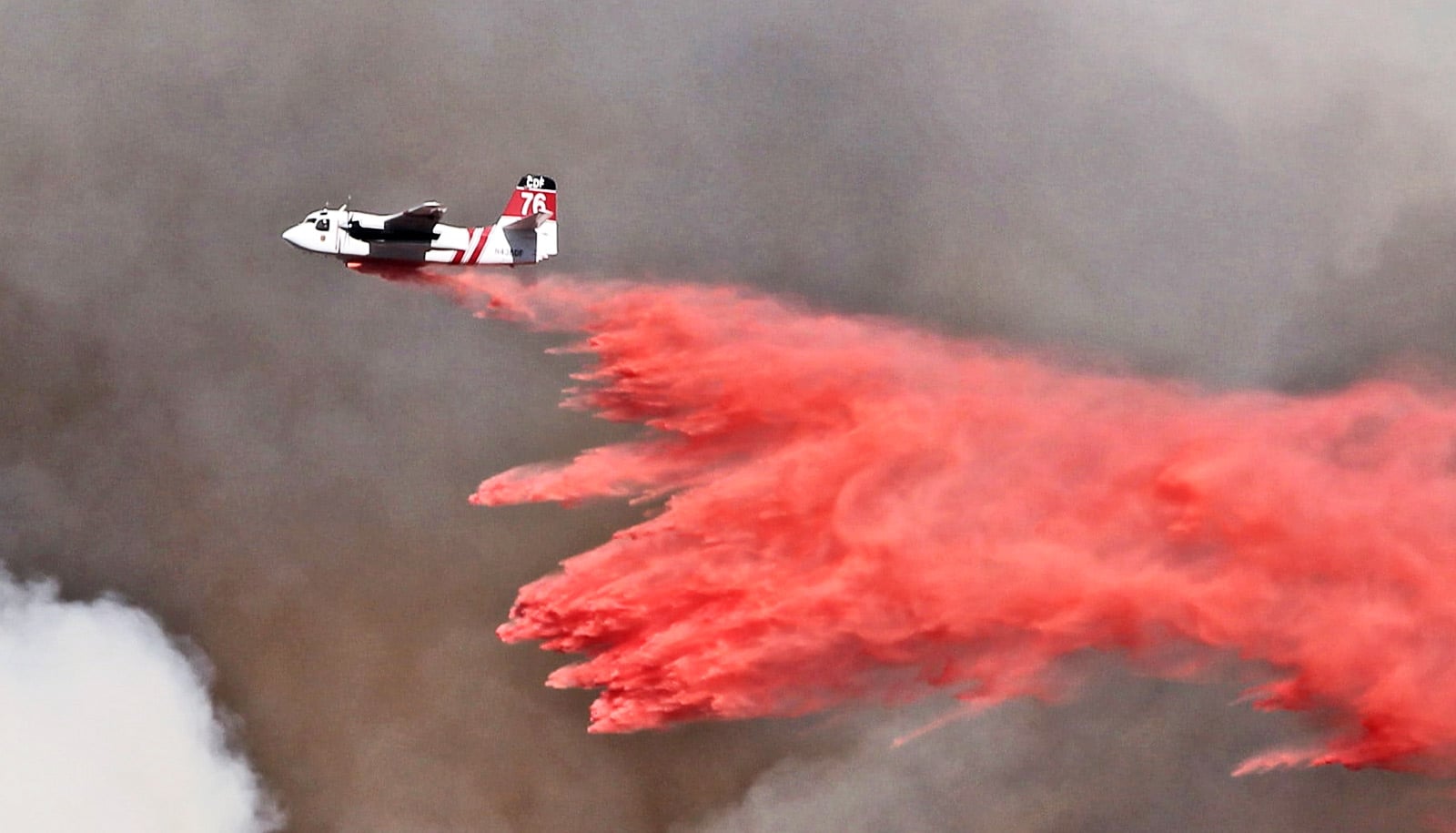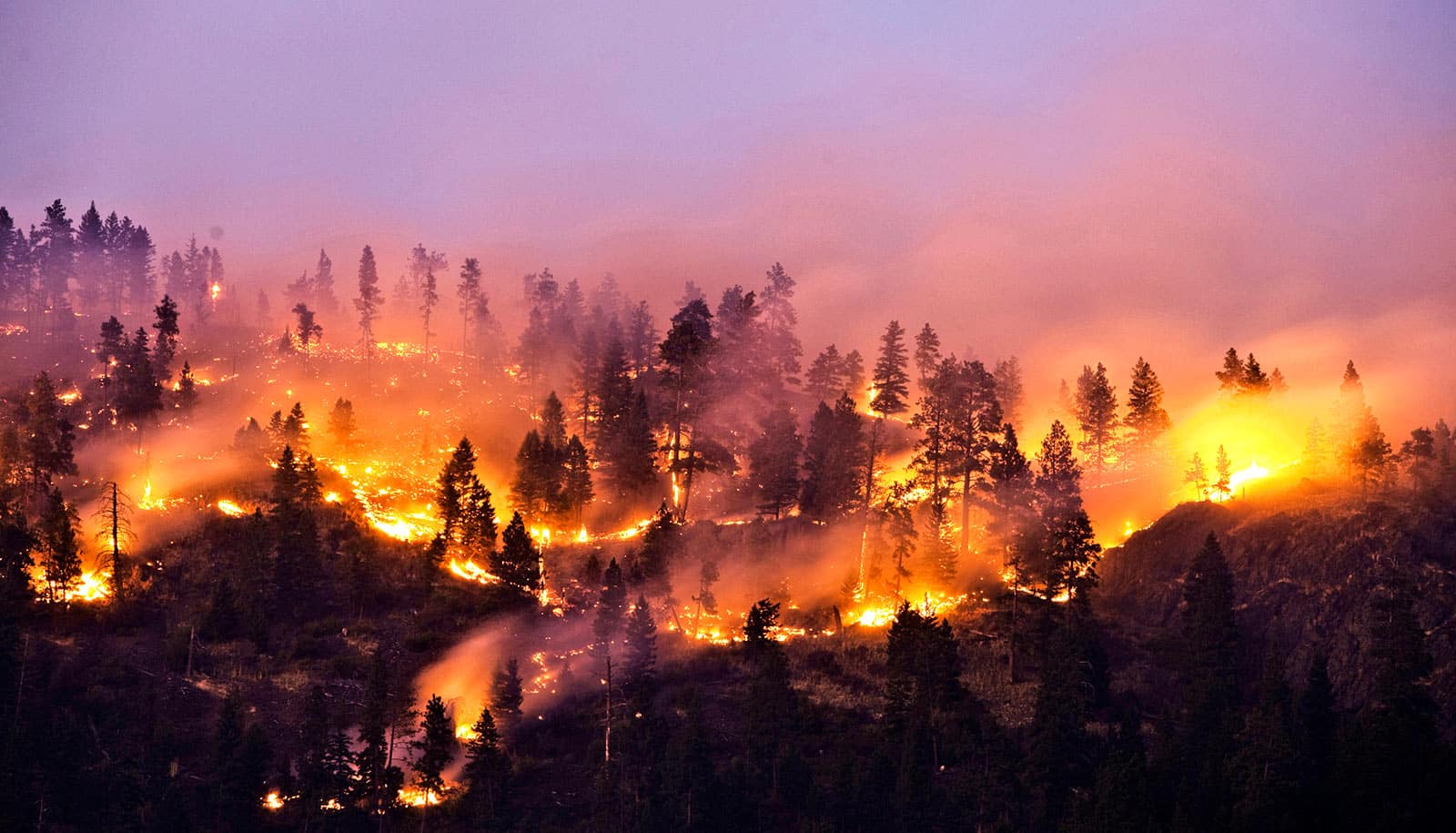Smoke from wildfires has more of a cooling effect on the climate system that most models have assumed, a new study of biomass-burning aerosols shows.
When wildfires burn forests and grasslands, biomass-burning aerosols are produced, forming smoke clouds. The composition, size, and mixing state of biomass-burning aerosols determine the optical properties of the smoke plumes in the atmosphere, and those properties determine how much the smoke clouds absorb and scatter the solar radiation.
For the new study, published in Nature Communications, researchers compared climate models’ predictions to large amounts of wildfire data collected in field sites around the world as well in laboratory experiments, and they found major differences.
“We collected field data from across the globe, and we found that the models make a lot of assumptions about the physical and optical properties of the biomass-burning aerosols, and those assumptions were not accurate,” says corresponding author Xiaohong Liu, professor in the atmospheric sciences department at Texas A&M University.
Climate models such as those examined in the study are used to create important climate change reports, such as the Intergovernmental Panel on Climate Change (IPCC) Assessment that is published about every seven years, he says.
“In this study we evaluate the climate models used in the IPCC assessment, and we found out that these models assume biomass-burning smoke is more light-absorbing than our data actually shows,” Liu says. “Our study shows that biomass-burning has a more net-cooling effect than previously thought.”
“We found that many of the most advanced climate models simulate biomass-burning aerosols or smoke that is darker, or more light absorbing, than what we see in observations,” says lead author Hunter Brown, who recently received his PhD from the University of Wyoming and who recently joined Liu at Texas A&M. “This has implications for the climate predictions made by these models.”
Observations and models used in the study covered a wide temporal range. Researchers chose Africa, South America, and Southeastern Asia, in addition to boreal fire regions, because these are the largest contributors to biomass-burning smoke emissions in the world, Brown says.
These biomass-burning aerosols are extremely complicated, Liu says. The complexity involves the aerosols’ physical and chemical properties, determined by the fire’s burning conditions and the fuel types—such as dry grasslands or forests.
“The smoke is very complicated—North American forest fire smoke is very different than Australian bush fire smoke, because of the different types of fuel and burning conditions,” he says. “They can produce darker or brighter smoke, and the chemical evolution of the smoke in the atmosphere can be very complicated.”
Liu directed this research, which involved both modelers and observationalists around the world. The team used the National Center for Atmospheric Research (NCAR)-Wyoming Supercomputing Center for data processing and model sensitivity simulations. The team incorporated its findings into the NCAR climate model, and found that the modifications improved the models’ accuracy in predicting wildfires’ effects on climate.
“Now we have a better understanding of the properties of these biomass-burning aerosols, so that now then we can improve the models and improve predictions,” Liu says.
Source: Texas A&M University



